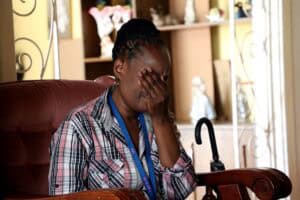A report has revealed that working women in South Africa are more at risk of toxic work stress.

In addition to recent figures by Statistics South Africa noting how women in Mzansi continue to shoulder the burden of unemployment, underemployment and lower workforce; a report has revealed that South Africa’s working women are more at risk of toxic work stress.
Unique challenges faced by women in the workplace and their greater share of juggling work and household responsibilities raise their risk of toxic stress, with negative impacts on both their productivity and the organisation’s performance.
Cost to economy
Women and men not only respond differently to stress, but more women are reporting increased levels of stress, and stress-related disorders such as depression and Post-traumatic stress disorder (PTSD) are more common in women.
“The negative impact of stress on productivity and organisational outcomes is significant,” said Head of the MBA in Healthcare Leadership programme at Stellenbosch Business School, Prof Renata Schoeman.
“Stress-related symptoms can contribute to absenteeism, staff turnover, late-coming and declining quality of work, and may lead to negative peer relationships, disengagement or presenteeism.”
The economic impact is significant – one study found that the productivity losses of absenteeism due to depression equated to 0.62% of SA’s GDP, with depression-linked presenteeism costing the economy 4.23% of GDP.
While a moderate level of stress is beneficial for productivity and motivation (eustress, or “healthy stress”), when the intensity of stress becomes overwhelming, more frequent or longer-lasting, the result is distress, or toxic stress, with negative physical, emotional, cognitive and behavioural impacts said Schoeman.
Writing in the 2024 Women’s Report by Stellenbosch Business School and the SA Board for People Practices (SABPP), Schoeman said despite greater focus on corporate mental health awareness and interventions after the Covid-19 pandemic, women’s stress levels have continued to rise, and stigmas around workplace mental health persist.
Chronic stress can cause or worsen mental health conditions such as depression, anxiety and mood disorders, and/or culminate in burnout.
ALSO READ: SA women continue to shoulder burden of unemployment
The prevalence of burnout and its root cause in chronic workplace stress has led to the World Health Organisation classifying it as an exclusively occupational phenomenon.
She said while women’s burnout levels have gradually reduced since the pandemic, half of the respondents in the 2024 Deloitte Women@Work survey (which included South Africa) reported that their stress levels had increased over the past year.
Half also reported being concerned about their mental health, while a third took time off from work due to mental health challenges.
Most women said they did not receive adequate mental health support at work, while two-thirds were not comfortable disclosing mental health difficulties due to concerns about their career progression, discrimination, job security, and previous negative experiences after disclosing mental health issues.
Schoeman highlighted a number of reasons for women’s greater risk of workplace stress becoming chronic, toxic stress.
ALSO READ: Why women in SA remain easy targets
Shouldering burden
Women are more likely to be employed in lower-paying jobs or self-employed and they have less job security, forming the majority of shift and contract workers and often juggling multiple jobs along with bearing most of the load of household responsibilities.
According to Statistics SA, the trends in labour force participation and absorption rates for men and women from 2014 to 2024 indicate that fewer women have been participating in the labour market as compared to men.
The data shows a general increase in labour force participation rates for men and women between the second quarter of 2014 and the second quarter of 2024.
Statics SA says this increase was more substantial for women, increasing to 55.8% in 2024 from 50,9% in 2014 (up by 4,9%), indicating a narrowing of the gender gap in labour force participation.
NOW READ: Education: A refuge and opportunity for black women






